2: Atmospheric structure, dynamics and global climate
1/54
There's no tags or description
Looks like no tags are added yet.
Name | Mastery | Learn | Test | Matching | Spaced |
|---|
No study sessions yet.
55 Terms
describe the composition of earths atmosphere
78% Nitrogen
21% Oxygen
1% Argon
400 ppm CO₂
variable components: 0-4% water vapour (0.01ppm at surface, 10ppm at 25km)
Draw and eplain the height-temp graph
3 warm areas:
Troposphere: warm air near ground, decreasing with height. heating from greenhouse effect. solar radiation absorbed by ground and emits infrared
Stratosphere: O3 + UV → O2 + O + heat
Mesosphere: " 50km = hot zone
Thermosphere: more intense radiation from sun
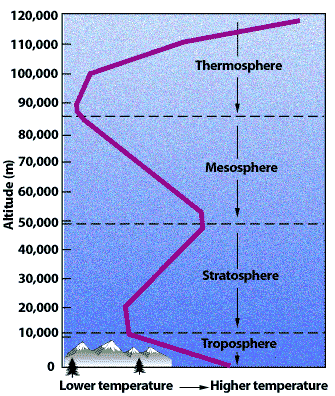
draw and explain the height-pressure graph
75% earths weight lies below 10km
at 50km 99.1% of the earths atmosphere lies below
pressure decreases rapidly with height
Acronym for composition of the atmosphere
Tropical Storms Mean Terrible Emergencies
Troposphere
Stratosphere
Mesosphere
Thermosphere
Exosphere
describe troposphere and its heat (and heat source)
Region of earths weather systems
temp decreases with height → relatively warm air near ground
heating from greenhouse effect
solar radiation is absorbed by the ground which emits infrared which is absorbed by the atmosphere
Heat is generated by:
intense radiation from the sun
x-rays and extreme UV
O and N absorb this radiation, causing them to break into their atomic components, these then react with the radiation, losing electrons and leaving ions (ionosphere)
explain how the earth remains radiative equilibrium - three laws or radiation
All objects emit radiation - Plancks law
Hotter objects emit more radiation than cooler objects - Stefann-Bolteman law
Hotter objects emit their peak radiation at shorter wavelengths - Weins displacement law
explain plancks law
ALL OBJECTS EMIT RADIATION
the earths climate system maintains a balance between solar energy absorbed and IR energy radiated into space.
the greenhouse effect distributes the temperature in the atmosphere so that the surface is much warmer than the mean radiative temperature
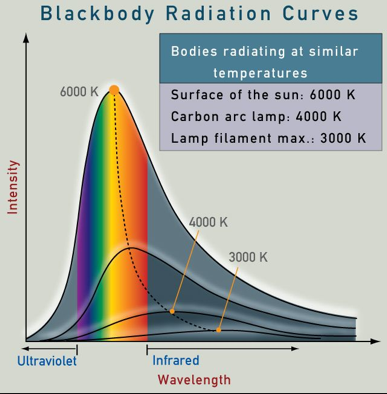
explain the stefann-bolteman law
HOTTER OBJECTS EMIT MORE RADIATION THAN COOLER OBJECTS
this law allows scientists to figure out how hot the sun is based on how much power strikes the earth in a square meter - the temp of earth without climate effect can be determined, this is useful for climate models
more energy will radiate out until net energy balance is zero earths temp will stabilise at another, increased value
the law acts like a negative feedback to keep earths temperature from changing in one direction only
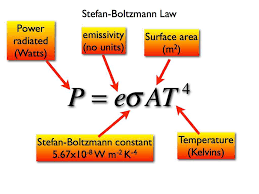
explain weins displacement law
HOTTER OBJECTS EMIT THEIR PEAK RADIATION AT SHORTER WAVELENGTHS
the GHG selectively absorb certain frequencies of radiation e.g. H2O and CO2 are strong absorbers
hot sun emits radiation in shorter wavelengths in visible end of spectrum
cool earth emits longer waves in infrared section
what if the earth had no atmosphere?
energy of incoming short wave solar radiation = energy of outgoing longwave radiation emitted by earth in order to maintain steady temp.
-18 degrees compared to 15
atmosphere adds 33 decrees to the temp of earths surface
with earths atmosphere, what happens to radiation and gases
greenhouse gases absorb infrared radiation but are transparent to solar radiation → so we see solar radiation penetrating too and being absorbed by the ground → emission of infrared radiation which is absorbed by the atmosphere
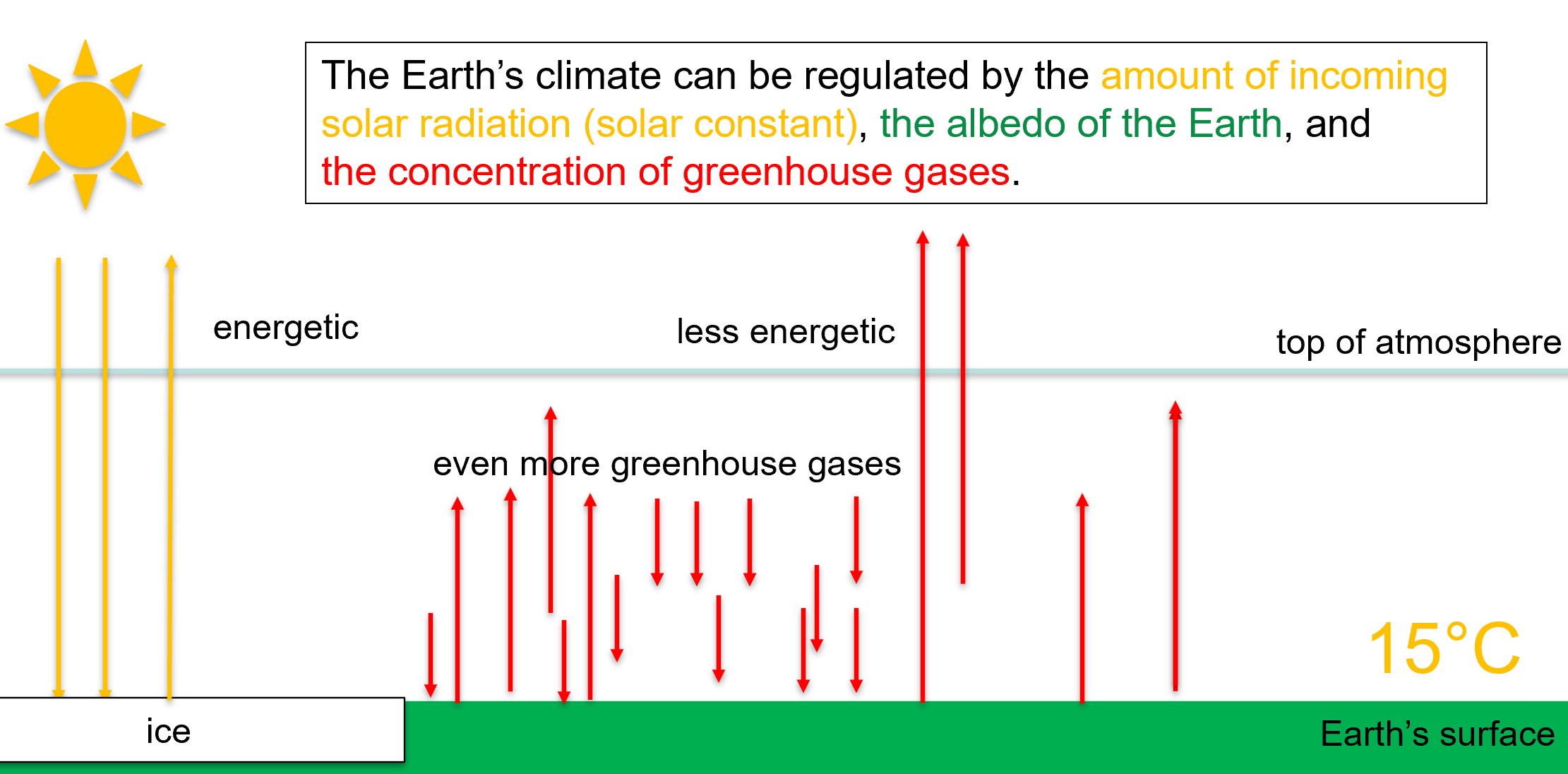
Mars (and venus) vs earth
lack oxygen in their atmospheres
do not have ozone layer or stratopause
different thermal profiles to earth
mars and earth both have warming near surface, ionisation occurs in both thermospheres byt there is no oxygen in the middle regions of the atmosphere on mars - hence the gap
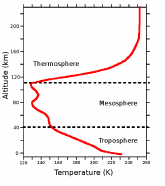
why is the atmosphere so important?
provides swings between day and night
protection from harmful radiation
transports energy from tropics to poles
provides wind and ppt to weather rocks and erode continents - rock cycle
troposphere
greenhouse effect
heating from ground
stratosphere → mesosphere
O3 + UV → O2 + O + heat
UV comes from above stratosphere where ozone is concentrated
thermosphere
ionisation of atoms
Describe the heat in the stratosphere
heat comes from the presence of ozone
O3 + UV → O2 + O + heat
breaking of the bonds constructing the ozone lead to heat release
what is dewpoint
the temperature the air needs to be cooled to (at constant pressure) in order to achieve a relative humidity (RH) of 100%
what happens when air moves up and down?
As long as no condensation or evaporation, an air parcel changes temp at a rate of ~10C/Km
the dewpoint does not change
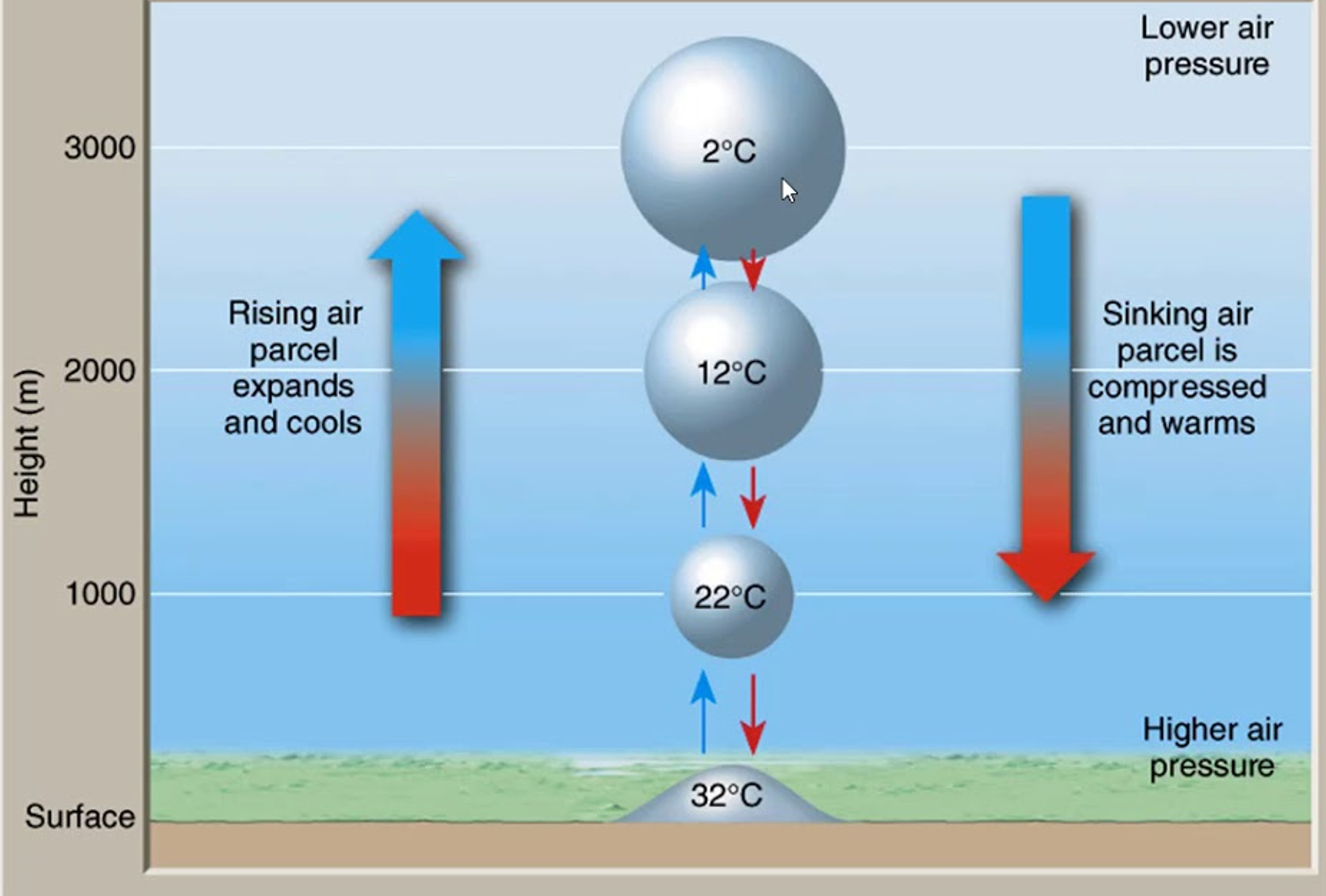
draw a height graph with temp and dewpoint of air

How does vertical movement of air produce clouds?
water molecules with enough Ek evaporate into water vapour
when condensation and evaporation are equal then the pressure due to water vapour is called the saturation vapour pressure
every 1km height increase results in a 10C decrease
The base of the cloud forms at the altitude at which the rising air cools and condensation starts. Rising air remains warmer and continues to rise, as it does this more vapour condenses, forming columns
draw the shape of raindrops at different sizes
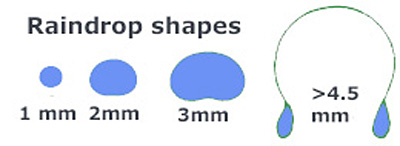
saturation definition
when air contains the maximum amoint of water vapour for a given temperature
latent heat definition
the energy transferred to a substance while it changes state
latent heat of fusion
what causes water to change state from solid to liquid
latent heat of vapourisation
what causes water to change state from water to vapour
saturation vapour pressure (eˢ) hPa
how much water would be in the atmosphere at equilibrium in a closed container
this increases with temperature
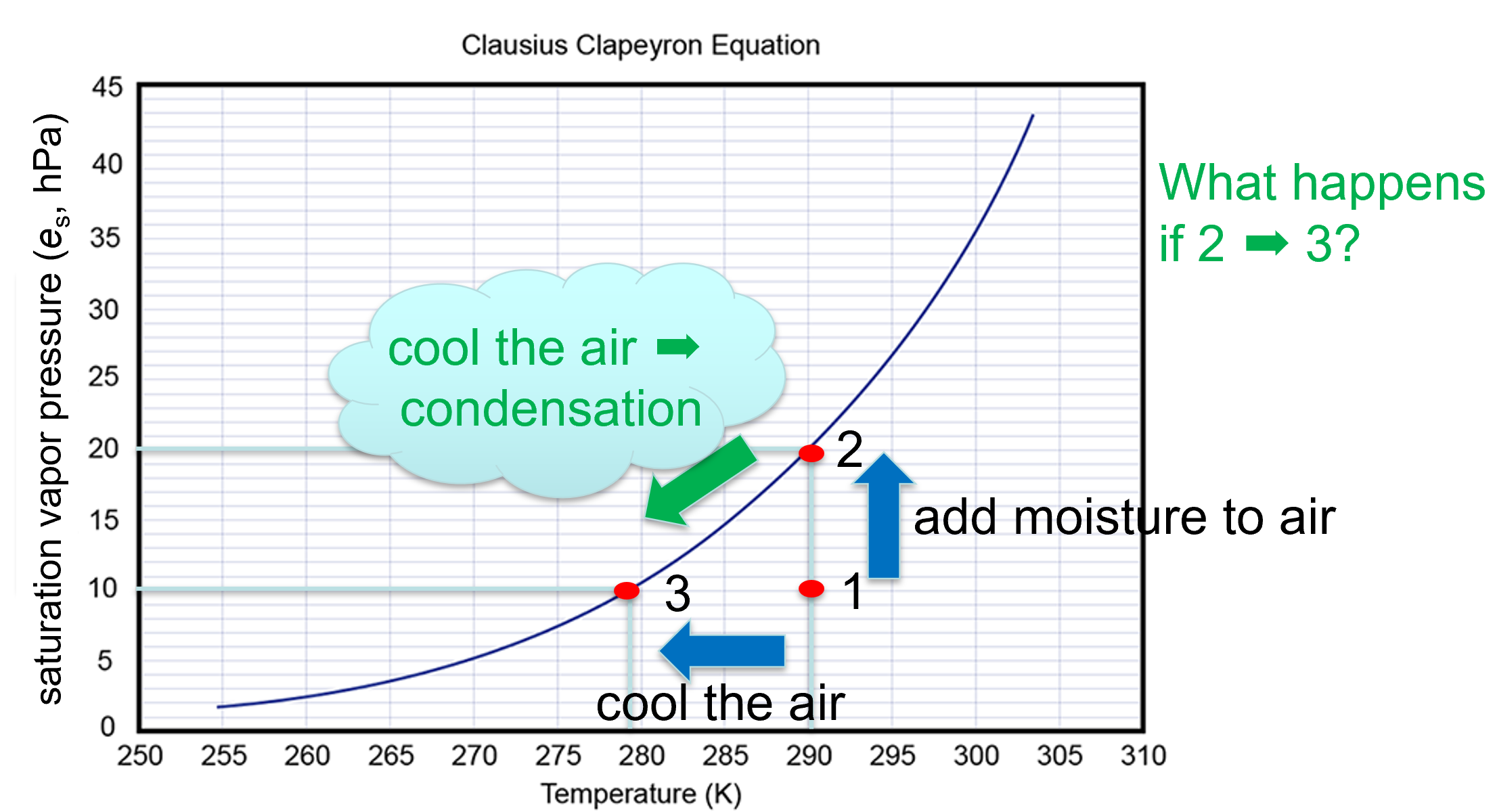
vapour pressure (absolute)
the partial pressure of water vapour in atmosphere
dew-point temperature (Td) hPa (absolute)
the temp of which air would have to cool to reach saturation (temp at which dew forms)
relative humidity equation
actual pressure (e) / saturation vapour pressure (eˢ) x 100
single cell circulation of a non-rotating earth
converging air goes up, producing clouds and precipiration
polar fronts at surface are associated with a jet stream
jet stream W→E
the number of cells per hemisphere is a function of rotation rate of a planet and its size
at some latitudes more energy is recieved by the sun and some areas have surplis. Flow from the poles to the equator in both hemispheres which produce the single-cell atmospheric circulation

Albedo
the measure of reflectivity of a surface, expressed as the percentage of incident light or radiation reflected. Higher albedo indicates more sunlight is reflected back into space.
How does the atmosphere maintain a steady temperature?
energy of incoming shortwave solar radiation must equal energy of outgoing long-wave radiation emitted by earth
thermal equilibrium at top - more infrared radiation, must be warmer
How is the earths climate regulated?
amount of oncoming solar radiation
albedo
conc of GHG
what is the Intertropical convergence zone?
The Intertropical Convergence Zone (ITCZ) is a region near the equator where trade winds from the Northern and Southern Hemispheres converge, causing frequent thunderstorms and rainfall, and playing a crucial role in tropical climate patterns.
what are subtropical anticyclones?
high-pressure systems formed when air, which has risen in the tropics, subsides in subtropical areas. the air is warmed as it descends making rainfall unlikely. The subtropical anticyclone over the north atlantic (‘Azores’ or the ‘Bermuda high’) influences weather and climate over eastern US, western EU, and north-west africa.
what is the polar front?
represents the boundary between higher latitude cold air and lower latitude warm air
what is the polar jet stream?
a core of strong winds around 5-7 miles above earths surface, blowing from west to east
The jet stream separates _____ air from _____ air.
The jet stream is _______ in the winter hemisphere.
polar, tropical, stronger
what are rain shadows? with examples
Rain shadows are regions with significantly reduced rainfall due to geographical features, such as mountains, blocking moist air from reaching them.
e.g. the Andes rain shadow
The jet stream brings flow from the ocean, up over the range but the other side is baron of vegetation.
e.g. Hawaii
Northeast trade winds are constant over the ocean, but on the downstream side, no vegetation.
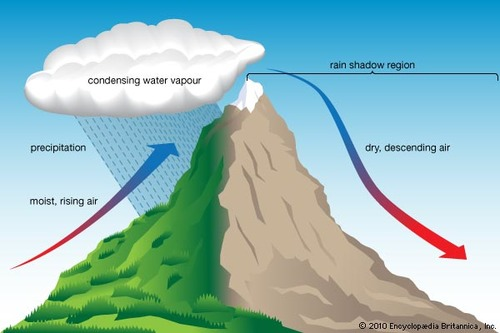
describe the Hadley cell
biggest cell
at equator
warmer, less dense air rises to ~18km and spreads out underneath tropopause
warm air spreads out towards the poles, gradually cooling and sinking - flowing back to the equator
describe the polar cells
smallest cell
cold dense air descends in the polar regions, flowing at about 60-70 degrees north
as it leaves polar regions it will begin to warm and rise, returning to the poles at high levels
describe the ferrel cells
between hadley and polar cells
not driven by temp, flow in opposite direction to the others
transport heat from equator to poles
result in semi-permanent areas of high and low pressire due to the rising and descending parts of circulation cells giving us our climatic zones
where air is rising, an area of low pressure is creates, resulting in more rainfall
what are wind barbs
indicate the speed and direction of wind on a weather maps
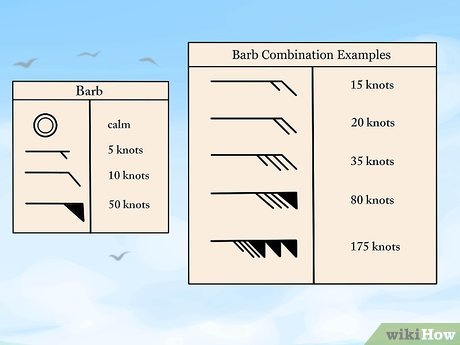
surface weather maps
T = low, H = high
isobars: lines of constand seal-level pressure
jed stream: closely packed height lines
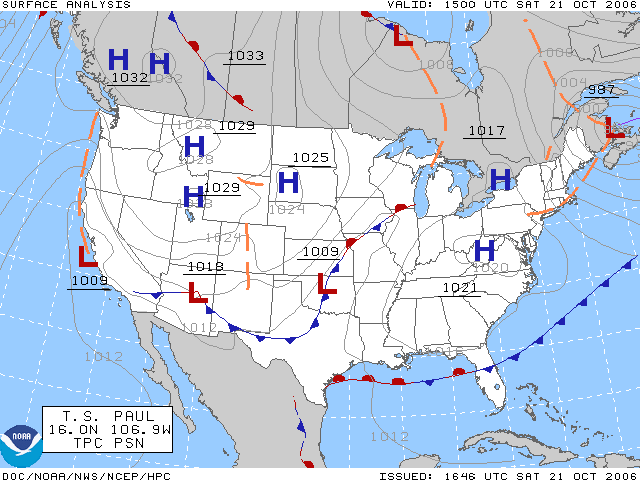
example of dry and moist adiabatic motion
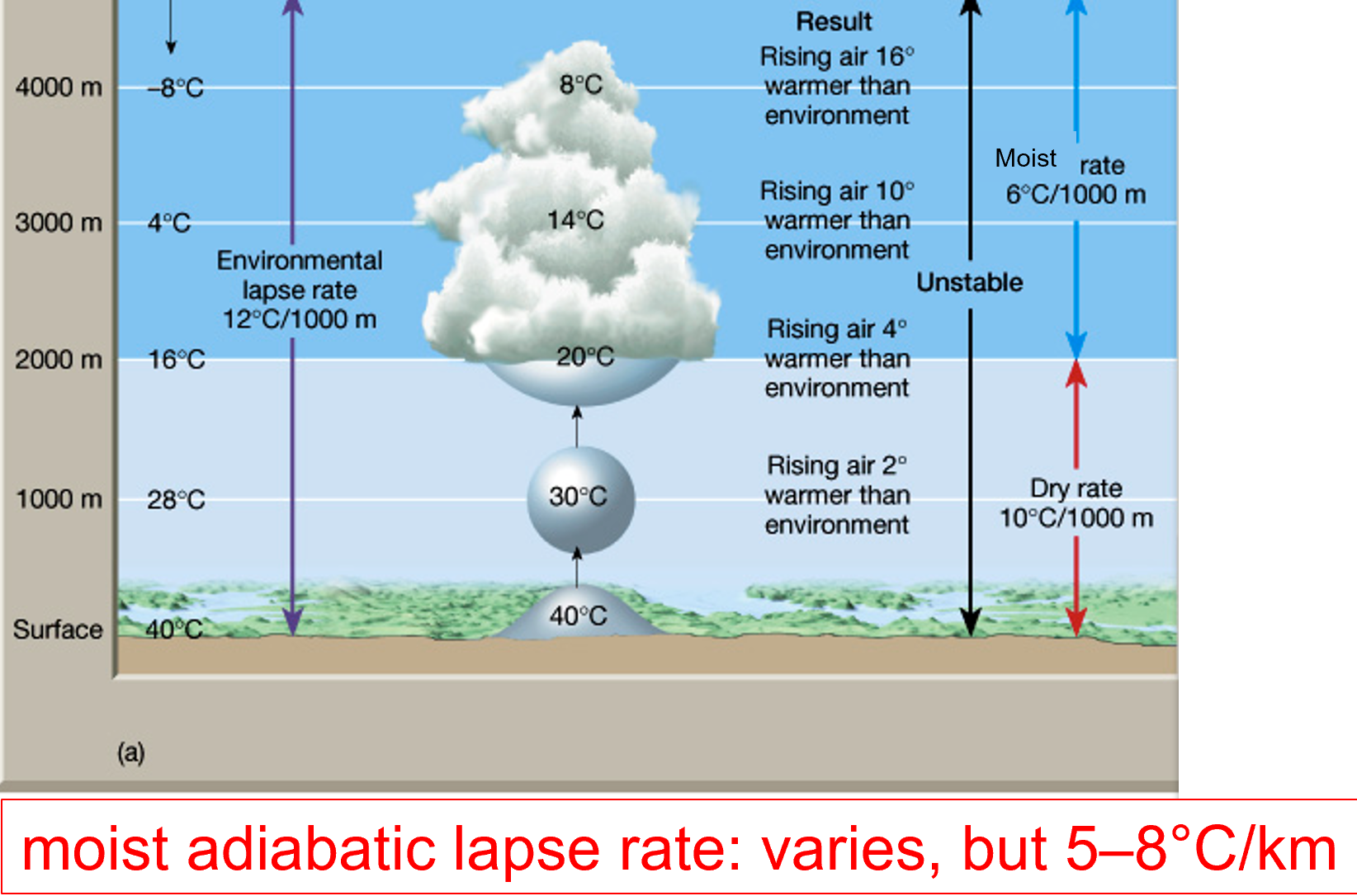
which is not a component of the earths climate system?
lithosphere
hydrosphere
heliosphere
cryosphere
heliosphere
what is the lowest layer of earths atmosphere?
troposphere
which is the least abundant gas in earths atmosphere?
CO2
where did most of the CO2 in the atmosphere originate from
outgassing
what is not a component of earths atmosphere
suspended dust particles
clouds
infiltration
water vapour
infiltration
how many polar jet streams are there
2
why is the thermosphere hot
ionization
what is the approx value of the dry adiabatic laspe rate
10C per km
when liquid water evaporates to water vapour, the surrounding air…
cools